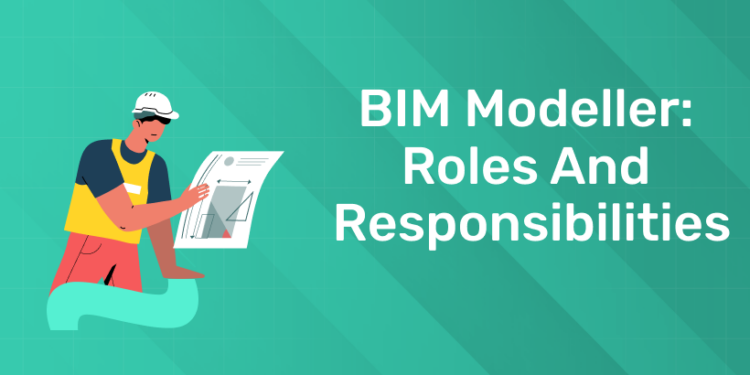Table of Contents
In the dynamic world of architecture, engineering, and construction (AEC), the role of a Building Information Modeling (BIM) Modeller has emerged as a cornerstone of modern project execution. As the industry pivots towards digital methodologies, the expertise of BIM Modellers ensures projects are visualized, analyzed, and executed with precision. This guide provides a deep dive into the roles, responsibilities, skills, and qualifications of a BIM Modeller, serving as a roadmap for aspiring professionals and industry stakeholders.
Your path to becoming a BIM Manager starts at Entri. Enroll Now!
BIM Modeller: Core Responsibilities
A BIM Modeller is the architect of the digital blueprint, responsible for creating and maintaining detailed, data-rich models. Their core responsibilities include:
- Creating Digital Models: A BIM Modeller develops detailed 3D models using specialized software, transforming architectural and engineering designs into comprehensive visual representations. These models act as the foundation for collaboration and decision-making throughout the project lifecycle.
- Integrating Information: The BIM model goes beyond geometry, embedding data related to materials, structural elements, and systems such as electrical, plumbing, and HVAC. This integration creates a centralized repository of information accessible to all stakeholders.
- Collaborating and Coordinating: BIM Modellers work closely with architects, engineers, and contractors to align the digital model with design and construction objectives. Their input ensures conflicts between systems are identified and resolved before construction begins.
- Managing Information: By organizing and maintaining extensive datasets within the BIM model, Modellers ensure accurate data retrieval. Their meticulous management guarantees the model remains a reliable source of information throughout the project’s duration.
- Visualizing and Analyzing: Beyond creating models, BIM Modellers generate visual outputs like renderings and walkthroughs. These outputs aid stakeholders in understanding the design intent and help in conducting simulations for energy efficiency, clash detection, and other analyses.
- Documenting and Delivering: Using the model, Modellers produce detailed construction documents, including drawings, schedules, and specifications. These documents are critical for guiding on-site activities and ensuring project accuracy.
- Model Maintenance and Updates: As projects evolve, so must the BIM model. Regular updates ensure it reflects real-time changes, supporting informed decisions and facilitating seamless transitions from design to construction and beyond.
BIM Modeller: Strategic Roles
While their primary focus lies in creating models, BIM Modellers play several strategic roles that contribute to the broader success of projects:
- Clash Detection and Resolution: By identifying conflicts between building systems within the digital environment, BIM Modellers preemptively address issues, reducing delays and cost overruns during construction.
- Quantity Takeoffs and Cost Estimation: BIM Modellers extract precise material quantities and other data to support cost estimation and procurement, ensuring projects stay within budget.
- Construction Sequencing and Scheduling: Using BIM tools, Modellers develop optimized construction schedules, simulating processes to identify bottlenecks and streamline execution.
- Facility Management Support: Post-construction, the BIM model serves as a resource for facility management. Modellers embed critical data such as maintenance schedules and equipment specifications, aiding long-term operations.
- Training and Support: Modellers often take on mentoring roles, training team members on BIM tools and methodologies. This fosters a collaborative and BIM-centric project environment.
BIM Modeller: Skills and Qualifications
Becoming a successful BIM Modeller requires a combination of technical prowess and interpersonal skills. Key attributes include:
- Technical Expertise: Proficiency in BIM software such as Autodesk Revit, ArchiCAD, or Bentley Systems’ tools is fundamental. A deep understanding of BIM standards and protocols is equally essential.
- Analytical Thinking: BIM Modellers must have a sharp analytical mindset to interpret complex designs and address challenges with innovative solutions.
- Communication Skills: Effective communication is critical for collaboration. Modellers must convey technical information clearly and build consensus among diverse stakeholders.
- Project Management Skills: Strong organizational abilities are necessary for managing multiple tasks, meeting deadlines, and ensuring deliverables align with project milestones.
- Adaptability and Continuous Learning: The AEC industry evolves rapidly, with new tools and methodologies emerging regularly. Successful Modellers stay updated and embrace lifelong learning.
The best BIM Manager course, guaranteed. Join Entri today.
Conclusion
The role of a BIM Modeller is integral to modern construction projects, blending technical expertise with strategic oversight. They not only shape the digital representation of projects but also ensure their execution is efficient, cost-effective, and aligned with the design vision. For aspiring BIM Modellers, gaining the right training is the first step toward success. Entri offers comprehensive courses tailored to the needs of the AEC industry. These courses cover essential BIM software, standards, and methodologies, providing hands-on experience and industry insights. Entri’s platform ensures learners acquire both the technical skills and the strategic understanding required to excel in the field. Explore Entri’s BIM Modelling course to kickstart your career in this exciting domain.
|
Engineering Upskilling Courses
|
| MEP Course |
| BIM Course |
| Quantity Surveyor Course |
| Structural Design Course |
| MEP QS Course |
Master BIM and Elevate Your Career – Enroll Today!
Stay ahead in the construction and design industry with our comprehensive BIM Course! Learn Building Information Modeling (BIM) from experts, gain hands-on experience with top software, and boost your career prospects. Join now and become a certified BIM professional!
Know MoreFrequently Asked Questions
What software do BIM Modellers use?
Common Software:
-
- Revit: A popular choice for architectural, structural, and MEP (Mechanical, Electrical, and Plumbing) modeling.
- Autodesk Navisworks: Primarily used for 4D (construction scheduling) and 5D (cost estimation) analysis.
- Bentley MicroStation: A robust platform for large infrastructure projects.
- Tekla Structures: Specializes in structural steel and concrete design and detailing.
What are the key responsibilities of a BIM Modeler?
- Model Creation: Develop accurate 3D models of building components, including walls, floors, roofs, structural elements, and MEP systems.
- Data Entry: Input accurate dimensions, materials, and other relevant data into the BIM model.
- Coordination: Collaborate with architects, engineers, and contractors to ensure model accuracy and resolve clashes.
- Model Updates: Maintain and update the BIM model throughout the project lifecycle to reflect design changes.
What is the job outlook for BIM Modellers?
- High Demand: The construction industry’s increasing adoption of BIM creates a strong demand for skilled BIM Modellers.
- Growing Field: The field of BIM is continuously evolving with new technologies and methodologies, offering ample opportunities for career growth and development.












